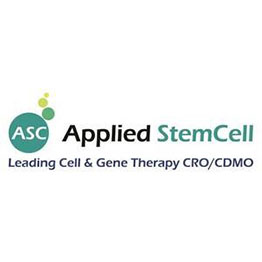Non-Human Species iPSC Generation (R&D) Service Details
- ASC will integrate its standard iPSC generation protocols into your project outline, but your project manager will work with you to your generation strategy, deliverables, and final report details.
- Fully Customizable Service - Inquire
Standard Packaging
- Ship 2 million frozen cells in cryovials (two (2) vials with 1 x 10^6 cells/vial) or live active cells in two or three (2 – 3) x T-75 flasks (70% confluence)
- With pathogen and SARS-CoV-2 test results
- Optional Pathogen Testing Service is available
- With pathogen and SARS-CoV-2 test results
- Provide enough media for 3-4 weeks of culturing, if special media/instructions are required
Deliverables:
- Your assigned project manager will discuss potential generation strategies, possible deliverables, and final report details.
Standard Workflow:
| Service |
|
1. Pathogen test (Optional)
|
| 2. Cell recovery, expansion, and banking |
|
3. iPSC generation
|
|
4. Colony picking, expansion, and cryopreservation
|
|
5. iPSC characterization (standard)*
|
* more detailed characterization options are available upon request
Since large animal iPSC generation remains an experimental area, ASC offers three rounds of screening. If the first two trials do not produce high-quality iPSCs, the customer is given the option to provide new starting material prior to the final iPSC generation attempt.
Required Starting Material & Information
Required Cell Line Sample Amount:
- Two (2) cryovials with 1 x 10^6 cells/vial; OR
- Live active cells in two or three (2 – 3) x T-75 flasks (70% confluence)
General Cell Line Information:
- Cell Name
- Species
- Cell Type (fibroblast, epithelial, suspension, adherent, etc.)
- Cell Origin, passage number, etc.
- If known, donor's age, disease condition
- Pathogen test and a COVID-19 test (if the sample was collected after December 2020)
- Optional Pathogen Testing Service is available
Specific Culture Conditions:
- Culture conditions, protocol, split ratio
- Please provide information on whether the cell line has been genetically modified. If so, what was the modification method (e.g., lentiviral vector)?
- Have you cultured/transfected the cells in the past? If so, what was the % efficiency?
- Can the cells be expanded from a single cell?
Additional Information For Skin Fibroblast Collection:
- "Kit" is not necessary. Simply leave the biopsy in a small tube filled with DMEM/10% FBS/1x antibiotics and ship it to us with blue ice
- 2mm x 2mm (at least) of dermal tissue (it will be great if the epidermis is removed)
- Store in DMEM/10% FBS/1x penicillin-streptomycin
- We recommend getting the biopsy from a normal soft (thinner epidermic) skin (no rash, no old scar, no tattoo, etc.) which is not always exposed to sunlight (UV) (to avoid any acquired mutation in the genome). For example, the skin behind the outer ear, near the armpit, etc. Try not to spill it when you open the bottle. Simply drop the tissue into the liquid. One or two small pieces (2mm x 2mm) of skin should be enough. The bigger, the better.
Applied StemCell can also genetically engineer iPSCs using CRISPR/Cas9 and can provide expanded characterization and differentiation to somatic lineages. Inquire for more details.


